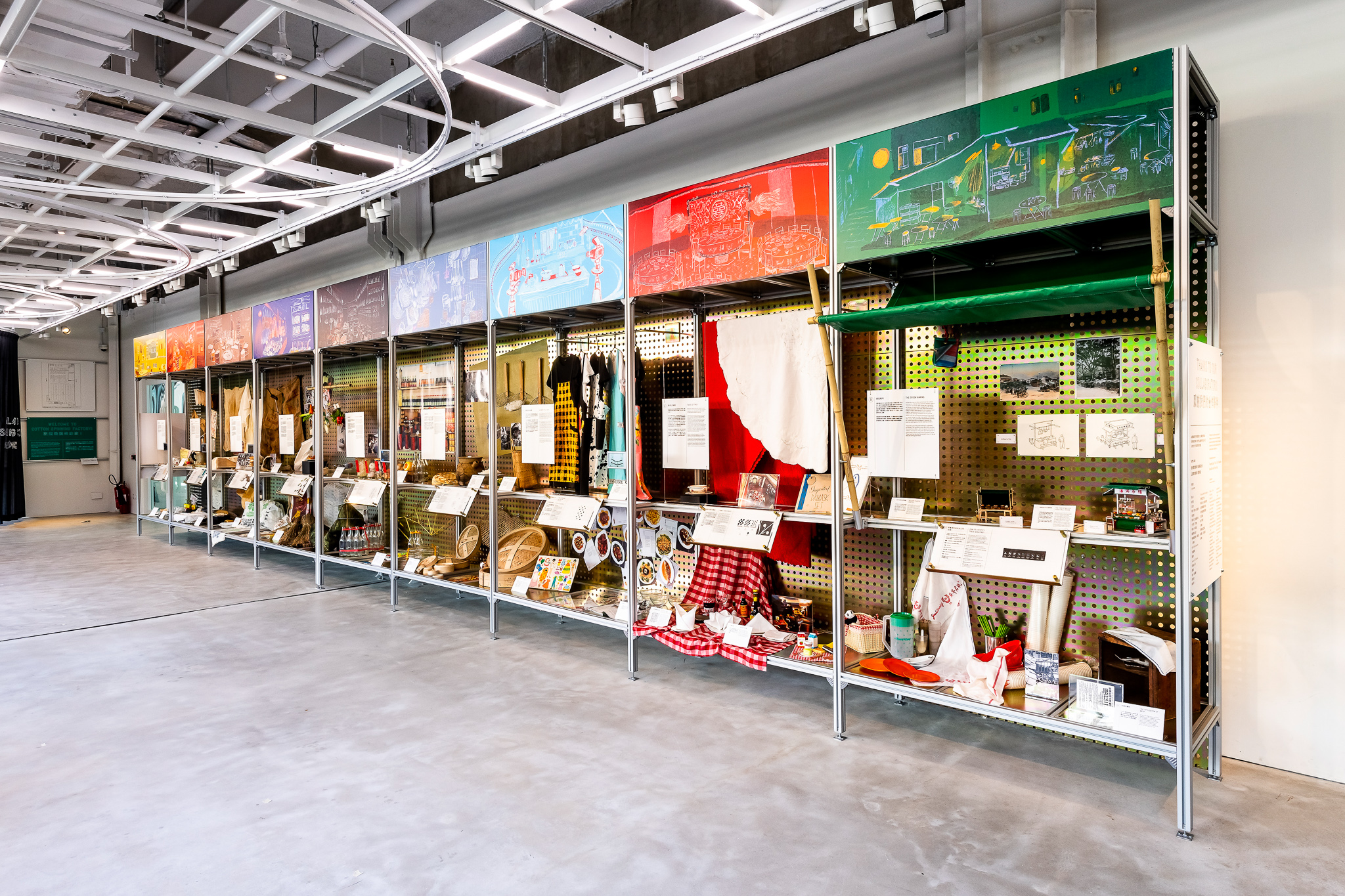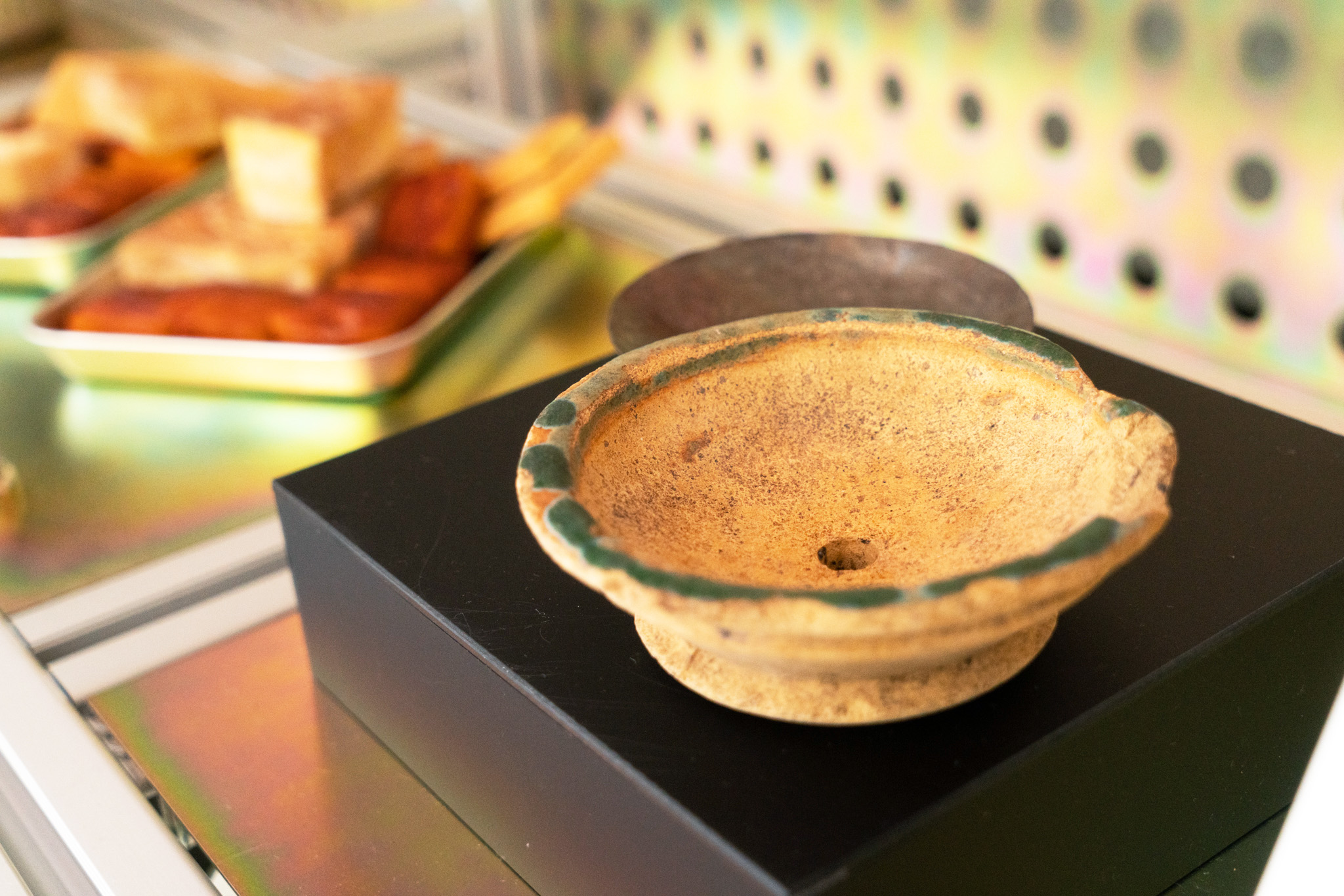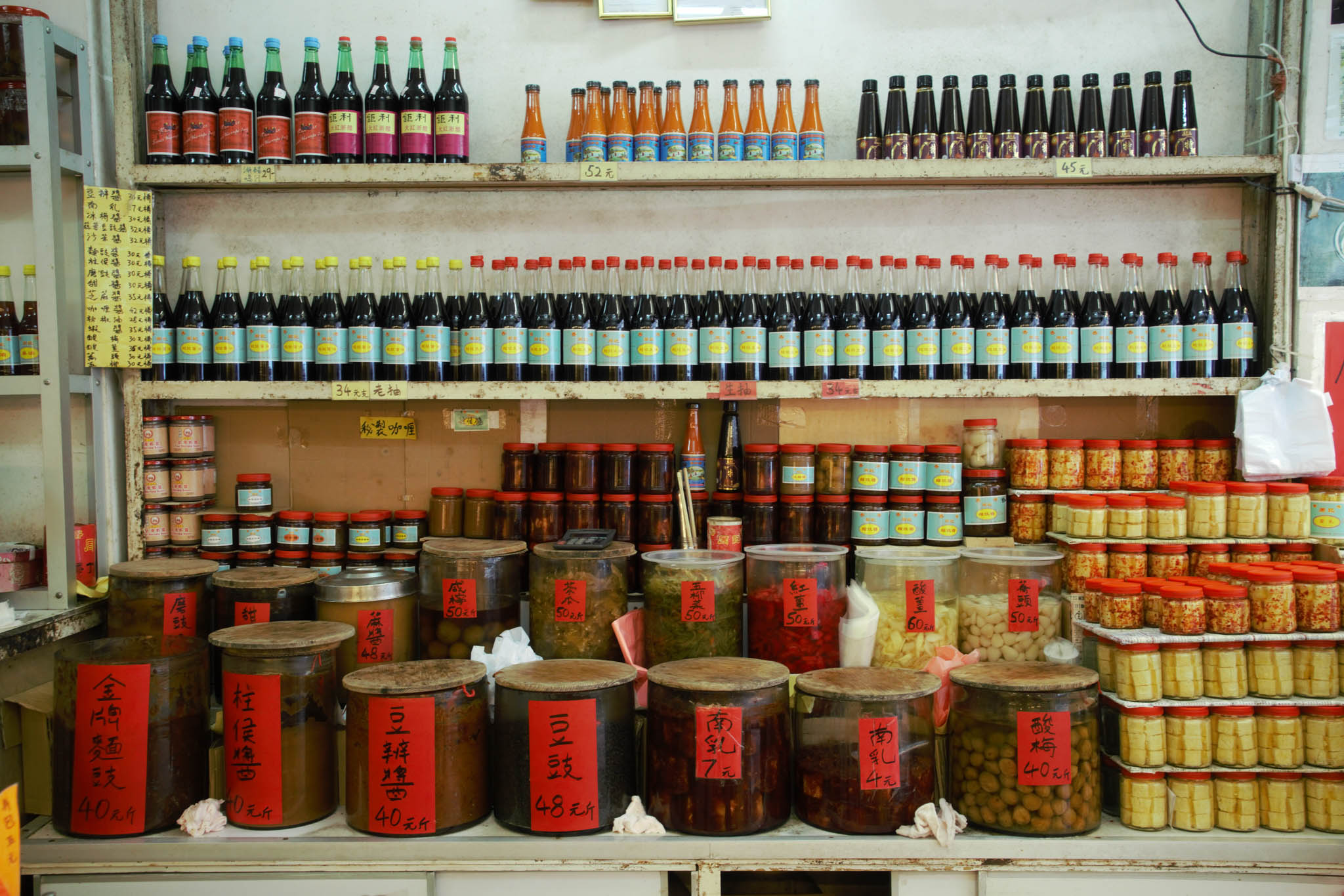
Chow Kee Sauces
Food and Nostalgia
18.08.2022
The D. H. Chen Foundation Gallery at CHAT pays homage to the textile industry in Hong Kong through exhibiting historical documents, machines and a special thematic display. In its third edition, the special display titled ‘Textile for Food’ celebrates the power of making and relevance of textile in the city’s food culture.
‘You are what you eat’, the saying goes. Aside from its impact on our physical health and well-being, food helps shape identity. It affects the way we orientate ourselves in a city and imposes certain rhythms to our daily lives, whether through eating at the same cha chaan teng with our families every Sunday morning, or stopping by the familiar stall at the street corner wet market on our regular grocery runs. Food, in all its perishable ephemerality, is forged ever so deeply into a city’s social fabric.
 Chow Kee Sauces
Chow Kee Sauces
Like many others in the city, I belong to the generation that grew up listening to parents recount childhood memories of ‘aeroplane olives’, double ice lollies, pickled ginger with sliced coconut. Often these conversations took place at the dinner table. These precious snippets of oral traditions pass through the family that are at once hearty and wistful, and for us younger generations, tinged with fancy and wonder.
Yet as we consider the Hong Kong’s celebrated food culture and heritage, how do we shy away from reducing it to something purely consumable, or that only belongs to an ‘old Hong Kong’? And in the presentation of heritage and food in the museum context, how do we skirt around nostalgia bias, a condition that casts a viewer’s subject in a rosy, all-positive glow?
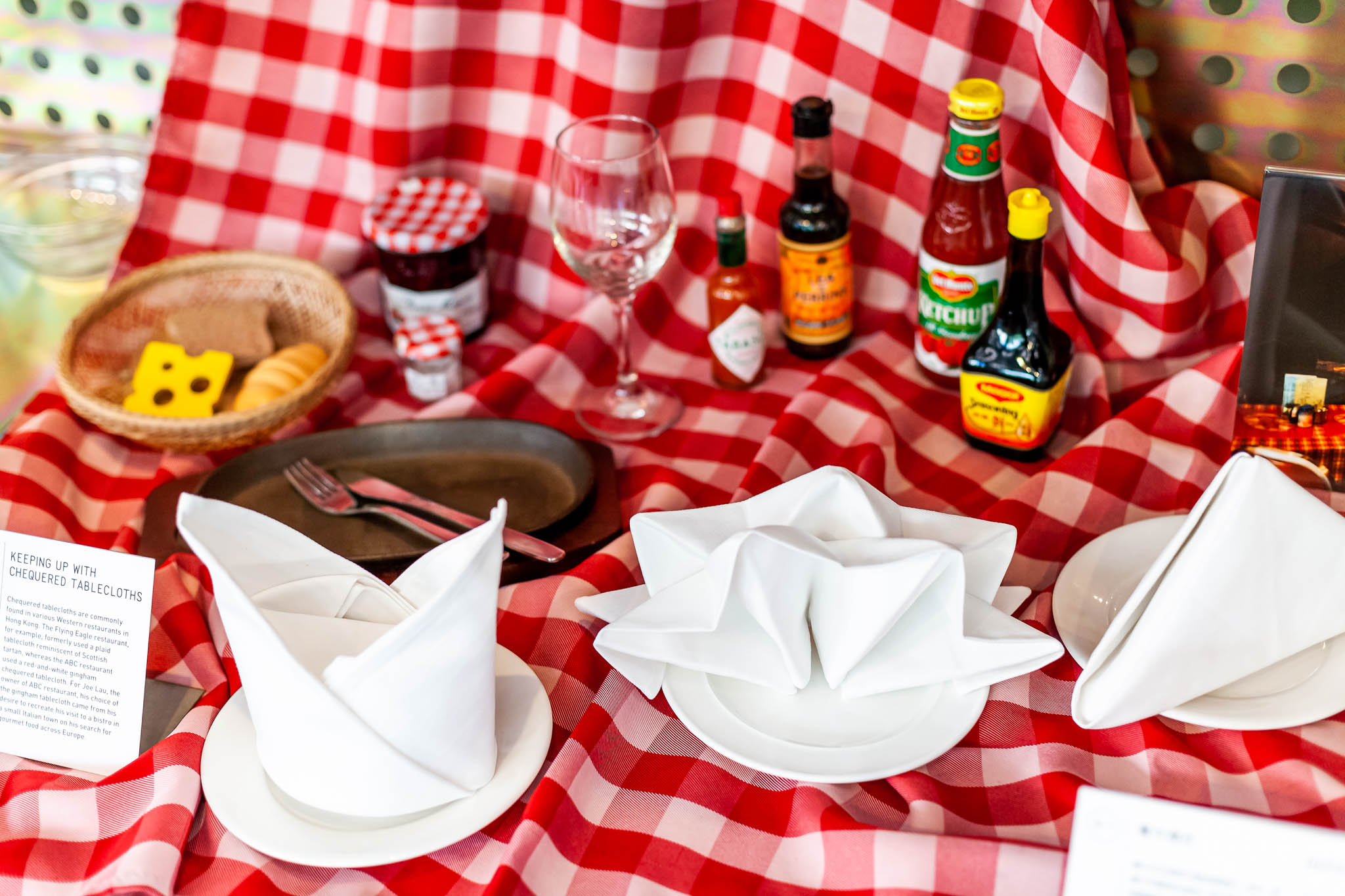
‘Table Settings’ at ‘Textile for Food’ display
What is nostalgia and how does it work?
Nostalgia is a longing for the past. It brings us back to ‘fond, personally meaningful memor[ies]’ and motivates us to preserve and cherish. Riding on sentimentality, it is a persuasive and effective tool that can be used to drive consumption desire in mass communication and advertisement.
But nostalgia is also ‘a representation infused with emotions’ that ‘thrives on conceptions of the past, not actualities’. Nostalgia can act as a filter through which everything is seen through rose-tinted glasses. While our exhibitions are meant to create a sense of informative resonance, how do we remain critical and prevent it from becoming a display of pure emotion? How do we push past the threshold of simplistic nostalgia?
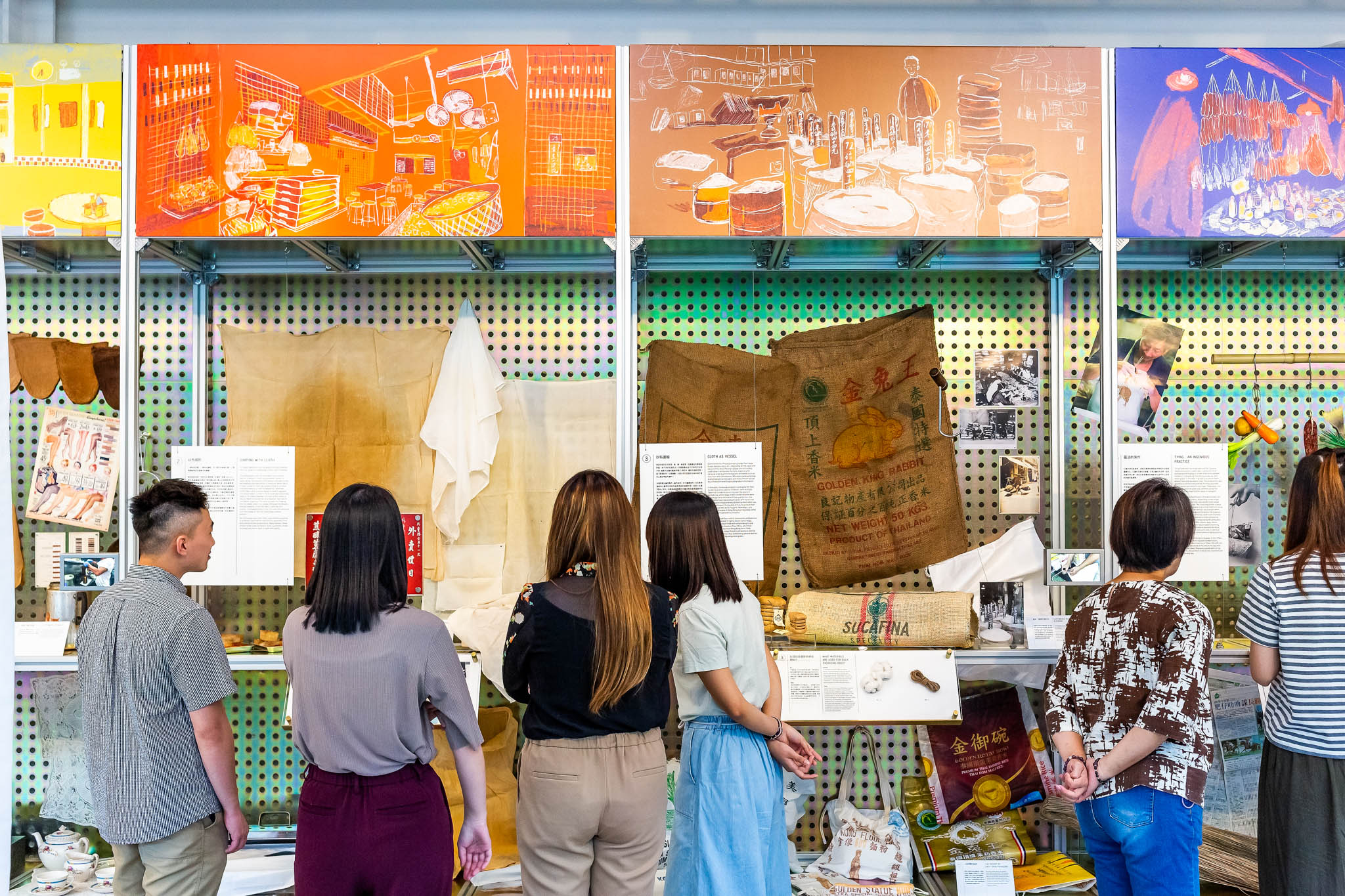 ‘Textile for Food’ display
‘Textile for Food’ display
In many ways, ‘Textile for Food’ is much more than just a nostalgic lookback into the city’s relationship with food. It is curated to critically examine Hong Kong’s food culture through the lens of textile. Spanning 9 colourful shelves, the display articulates the ways textile and textile methods are used in food culture. Exhibits include familiar objects that are often seen but perhaps hardly discussed, let alone studied: from cloth bags that filter tea leaves to make the city’s celebrated milk tea, to traditional textile techniques used to interlace utensils from ladles to baskets, to canvas awnings that provide shelter to the many dai pai dong dotted around the city.
 Lam Kee Wire Fences
Lam Kee Wire Fences
From food products, processes and presentation styles found and practiced in the city, ‘Textile for Food’ explores the diverse forms and functions of textiles. And through the shelves, we present our findings on the local ingenuity and resourcefulness that are evidence of the textile industry’s continued impact in the city across all walks of life.
The ‘Textile for Food’ display is on view until 4 October 2022. Read more about ‘Textile for Food’ here.
References:
Dumbadze, A. (2018) Memory Banks. Artnews. Art for America. https://www.artnews.com/art-in-america/features/memory-banks-63536 [Accessed 17th August 2022].
University of Southhampton. (2013) What Nostalgia is and What It Does. Nostalgia. https://www.southampton.ac.uk/nostalgia/what-nostalgia-is.page [Accessed 17th August 2022].
